Business Transformation & Operational Excellence Summit & Industry Awards (BTOES)
The Premier Cross-Industry Gathering of Business Transformation, Operational Excellence & AI Industry Leaders & Senior-Executives.
The Premier Cross-Industry Gathering of Business Transformation, Operational Excellence & AI Industry Leaders & Senior-Executives.
Filter by Day - Click on any day below to view that day only. To view all days, please click on "Full Programme"
| Full-Day Workshops | Pre-Summit Workshops & Keynotes | Main Summit | Main Summit |
Filter by Track - This displays the Main Stage Sessions & the respective Track Sessions - select "Full Programme" above first. To view all sessions click "Show All"
| show all | People Summit | Process Summit | Technology Summit | Pre-Summit Workshops |
Full day masterclass and exclusive cross-industry networking event description is below.
Excellence & Innovation Acceleration: Unleashing the Power of Great Leaders and Organizations
In a disrupted world, how do you build a culture and practices where extraordinary collaboration and innovation become ordinary? A high-performance organization that consistently delivers exponential leaders, growth and value creation in times of uncertainty and rapid change.
The key ingredients for enduring greatness are not what you see portrayed most often in the media. Great enduring organizations implement practical principles and disciplined mechanisms to create and scale excellence, innovation, the right technologies, and value creation within a culture of effective collaboration.
We will explore the benchmarks and practical insights from more than 1,000 award winning organizations on excellence, innovation, and cultural, business, and digital transformations for value creation. And how to blend disciplined innovation methods with elements of venture capitalism, crowdsourcing, and collaborative leadership to deliver rapid and sustainable business improvements and innovations in any industry.
Benefit from strategic and execution insights from high performing, cross-industry leaders, including:
You will also learn:
Hands-On Experience Includes:
What makes this masterclass special?
The interactive masterclass is led by the creator of the award-winning Excellence & Innovation program, Jose Pires. It is a comprehensive guide for leaders and practitioners, loaded with proven methods and backed by a strong, 25-year track record of results to accelerate innovation, collaborative leadership development, strategy execution, and value creation in any industry.
Its track record of innovation, leadership development, strategy execution and value creation has won multiple industry awards and accolades, including the Global Engineering and Construction Award of Excellence (Rice Global E&C Forum), the Top U.S. Private Company for Leaders (Chief Executive Magazine) and the Business Transformation & Operational Excellence World Summit award.
The program for Excellence & Innovation acceleration, culture, business, and digital transformation includes more than 50,000 professionals and over 5,000 organizations in energy, oil & gas, petrochemicals, power generation, infrastructure, engineering, construction, telecommunications, technology, retail, finance, banking, insurance, law, healthcare, transportation, electronics, semiconductors, food, manufacturing, education, government and non-profit organizations in more than 20 countries.
This exclusive masterclass for cross-industry senior and emerging leaders also includes:
About the Executive Masterclass Leader
José Pires serves as Excellence & Innovation (E&I) executive leader and advisor for companies ranging from startups to Fortune 50, where he oversees the global identification, prioritization and execution of high value business improvements and innovations for the companies, business partners and customers in multiple markets.
Pires has held Excellence & Innovation leadership positions in leading, global companies in the electronics (Sony), semiconductor (Cymer-ASML), food (Nestlé), energy/water/telecommunications infrastructure (Black & Veatch) and oil & gas/energy (Andeavor-Marathon Petroleum) industries. Throughout his career, Pires developed and refined E&I as an award-winning program to accelerate innovation, leadership development, strategy execution and value creation globally.
Pires is an advisory board leader and keynote speaker for organizations and global conferences on innovation, operational excellence, leadership development, strategy execution, culture, business and digital transformation, customer engagement, exponential technologies and growth acceleration.
He is an executive Lean Six Sigma Master Black Belt who holds a Bachelor in Engineering Physics from the University of Kansas and a Master in Business Administration focused in Investment Banking and Entrepreneurship from the University of San Diego.
For some, the operational excellence aspiration is ‘everyone a problem solver.’ For others, the transformational ambition is ‘continuous improvement for everyone.’ If you and your organization are or are planning to operationalize a similar strategic mandate, this master class and networking session is for you.
Successfully leading an organization-wide initiative that engages everyone, constantly adds value, and always improves and innovates, can be a complex, daunting, and unforgiving challenge. In this masterclass, designed for significant audience participation, OPEX leaders – through facilitated dialogue -- shall share ideas, insights, and experiences about how they and their organizations are mobilizing to achieve goals, assure strategic alignment, invigorate processes, thrill customers, delight stakeholders, accelerate speed to results, optimize resource utilization, excel at execution, and sustain long-term impact.
Topics to be discussed include:
About your Workshop Leaders
Rob Stewart, co-founder and CEO, and his OpusWorks team specialize at enabling organizations such as Cargill, Cintas, the U.S. Air Force and many others to more rapidly and simply scale their Lean/Six Sigma/Problem Solving/Continuous Improvement initiatives. He is passionate about how learning and systems can transform lives and improve performance.
Ted Iverson is a former Senior Operations Expert with McKinsey & Company and has led business improvement transformations in many industries and cultures. His focus is global transformations including work on productivity, workflow improvement, alignment of costing and incentive systems, organizational design and purposeful employee engagement. He has been a Shingo Prize examiner for the past twenty-nine years.
Attendees of this masterclass are encouraged to bring their laptop computer so they can actively participate and contribute to the interactive discussion.
The Pizza Simulation is a highly interactive, immersive, and memorable experience where you will learn how to improve organizational effectiveness, transform the customer experience, and maximize employee engagement. The simulation uses a context everybody is familiar with: a pizza delivery business. Over the course of just a few hours, you will embark on a journey to improve the performance of a business struggling to meet customer expectations. You will be introduced to a few simple yet powerful tools and concepts to help you redesign work and apply the learnings immediately to achieve dramatic performance gains. The pizza simulation has been used with hundreds of companies from Fortune 100 to mid-size organizations to equip teams with the knowledge to fix work and achieve dramatic performance gains.
You will learn how to:
Learn the latest time management methods by looking back at a quick history of time management in three phases:
As we focus on three-dimensional time management methods learn practical ways to answer the fundamental question – what can I do today that will give me more time tomorrow? Leave with practical actions and steps you can take that will in fact let you create more time for yourself so you can genuinely focus on what matters most.
Many senior leaders have great ideas for where they would like to lead the organization forward. However, having a clearly articulated vision and a comprehensive plan to execute these ideas is equally important. The Strategic Planning Masterclass is designed to help leaders become visionary storytellers and skillful executors. The session will provide a hands-on learning environment with proven tools and methodologies to help visualize the "big picture" and articulate the vision effectively. Additionally, participants will learn how to create the operational framework required to ensure effective execution to help bring those ideas to life.
Key Takeaways:

Decades of research show when employees experience their work as meaningful, they are more productive, creative, and loyal. But what can leaders do to create the conditions for employees to do their best work and build an agile operating model?
The Operating Model Masterclass is designed to equip leaders with proven frameworks, tools, and strategies for designing work to deliver a triple win: improved productivity, increased engagement, and satisfied customers.
Participants will learn how to create good, intrinsically motivating jobs and make operating model design decisions that maximize human potential. Additionally, they will learn how to identify opportunities and readiness for improving work design.
Key Takeaways:
The Challenge of Scaling AI Initiatives: Launching pilot AI projects is only the first step; scaling them to achieve significant impact involves transforming how work is conducted, moving beyond the quest for quick fixes.
The Importance of Human Insight: The reliance on AI for ideation could risk settling for subpar ideas. Human critical thinking remains irreplaceable, emphasizing the value of predictive AI in accelerating learning and making evidence-based decisions.
Principles Over Tactics for AI Implementation: In the fast-evolving AI landscape, adhering to core principles of value creation and driving change will determine organizational success, highlighting the importance of a culture that values speed of learning and rethinks value creation and delivery.
Empowering Teams for Innovation: To foster innovation, teams need empowerment within a framework where incentives align with organizational goals, urging leaders to cultivate collaborative relationships with stakeholders. This approach shifts focus from mere order execution to collectively discovering innovative solutions.
Use Cases In the Wild: Looking at current real-world applications, using AI is demonstrating power tackle complex issues and streamline operations across various sectors.
Getting Started Using Pilot Teams: One of the simplest techniques for facilitating transition is pilot teams. Pilot teams allow the roll out of one or more aspects of a transformation to a limited part of the organization before implementing it more broadly.
When you look across any modern industry or large organisation, the common ground is that most are attempting to keep up with the speed (and complexity) of change.
Whilst most organisations accept that the effective ability to manage organisational change is a critical differentiator for success, knowing ‘how’ to do that in an efficient and sustainable way is an ongoing ‘un-lock’, particularly since yesterday’s OCM playbook doesn’t always apply to today’s organisational challenges.
This session addresses this challenge and explores:-
If you’re involved in a business transformation that seems stuck in the mud, you won’t want to miss this highly interactive session, where you’ll learn practical ways to supercharge your efforts!
While most companies are focused on the transformation process, the real gold is in the results! When you can shift your company’s mindset and implement practices that focus on outcomes, you’ll get leaders excited about transformation and the effort will quickly get unstuck and gain momentum.
Key Takeaways:
Key takeaways:
Are you concerned about the decline in civility? If so, you’re not alone. More than nine out of ten Americans, 93%, believe the erosion of civility is a problem. Polls blame divisive politicians, social media trolls, and shouting talking heads who tell us that ideological opponents are worthless. It’s not too late to turn things around! Join us as speaker, Ric Keller, teaches us his simple rules for leading with civility in a sometimes uncivilized world.
Dive into the heart of strategic planning with our transformative workshop, designed for leaders seeking to bridge the crucial gap between strategy and execution.
Discover how to navigate the often overlooked terrains of company culture and scenario planning, ensuring your strategic initiatives are not just visionary but also resilient and culturally coherent.
Through world-class frameworks and proven methodologies, you'll gain the tools to seamlessly integrate essential elements into your strategic processes, aligning closer with your organization's core objectives.
Join us to elevate your strategic planning and turn challenges into opportunities for success.
Dive into the heart of strategic planning with our transformative workshop, designed for leaders seeking to bridge the crucial gap between strategy and execution. Discover how to navigate the often overlooked terrains of company culture and scenario planning, ensuring your strategic initiatives are not just visionary but also resilient and culturally coherent. Through world-class frameworks and proven methodologies, you'll gain the tools to seamlessly integrate essential elements into your strategic processes, aligning closer with your organization's core objectives. Join us to elevate your strategic planning and turn challenges into opportunities for success.
4 key Takeaways
Understanding the Value of Culture in Strategy Execution: Discover how aligning strategy with organizational culture can significantly boost performance and success.
Strategic Resilience through Scenario Planning: Learn to craft scenarios that prepare your organization for the future, fostering resilience and adaptability.
Insights into Common Oversights: Uncover the reasons behind the frequent neglect of culture and scenario planning in strategic initiatives.
Employee engagement and retention strategies are essential for organizations to attract and retain top talent, foster a positive work environment, and drive employee satisfaction and productivity.
Key Takeaways:
To promote change and accelerate innovation, we must empower our teams to envision, create, and deliver products and services that distinguish our organizations. In the face of rapid changes to both the workforce and the workplace, where stagnancy is not an option, leaders must be open to adjusting their vision and approach.
Join Edgeverve for an insightful workshop on 'Practitioners' Perspective on Delivering Operational Efficiency Using AI, where we will delve into the dynamic interplay between human expertise and AI technologies.
In today's landscape, it's crucial to optimize both man and machine to drive productivity improvements, enhance customer and employee experiences, and fuel revenue growth. Edgeverve's workshop will explore practical strategies for empowering enterprises while leveraging AI advancements to automate routine tasks.
As we transition into the era of Gen AI, we will uncover innovative techniques to harness the full potential of AI, enabling humans to focus on complex decision-making processes.
Discover practical strategies on how to
Join Badri Devalla, PhD, to gain actionable insights and unlock newpossibilities for operational excellence in your organization.
Understanding Information Lifecycles Workshop
Information in the modern enterprise spans many different organizations, processes and systems overtime. Understanding how the entire information lifecycle supports business operations is critical fortransforming business capabilities and supporting IT systems.
Information Lifecycle Analysis and theresulting Diagrams provide unprecedented and detailed insight into Information needs of businessoperations. This new insight significantly reduces the risk associated with business transformation andassociated IT projects, and helps ensure the transformed business operation gets what it needs.
This Workshop will describe Information lifecycle analysis and provide hands on experience performingInformation Lifecycle Analysis on a simple business transformation problem.
Today’s enterprise leverages a complex ecosystem of customer, enterprise and employee digital products and services. The day-to-day interaction of these products and services is a fabric of connections and varied requirements. It is crucial to refine the lens of service commitment to a common framework of service expectations and objectives for a structured approach to integrated services delivery.
Key Takeaways/learnings
Transformations fail at a staggering rate of 70%, often due to organizational complexity, leading to chaos. The key to success lies in achieving alignment, directing all resources towards transformational objectives. Central to achieving alignment is establishing a common language of processes that bridges diverse perspectives.
The Process Inventory Framework offers a comprehensive solution to address all transformation challenges in a unified manner. This workshop covers both the theoretical foundations and practical steps needed to deliver on your transformational agenda
The basis for this workshop is the book 'Digital Transformation Success' authored by Michael Schank. With over 25 years of consulting experience, Michael developed this framework as an antidote to the chaos he constantly encountered on complex programs.
This comprehensive guide details Michael's process-based framework for overcoming transformation challenges and delivering on your strategic aspirations. The book is available on Amazon at: https://a.co/d/gHg6BNx
Using advanced AI tools to facilitate business transformations in organizational change. This approach integrates AI-driven analytics and machine learning to understand and predict employee responses to change. It personalizes coaching strategies for teams and individuals, improving adaptability and engagement. By analyzing patterns in behavior and feedback, AI chatbots offer tailored advice, enhancing decision-making and problem-solving. This modern method streamlines change processes, promoting a more agile, responsive, and effective organizational culture.
Overview: Organizations are often challenged by the need to get a product to market quickly. For many of these organizations they are so eager to get the product to market they fail to remain engaged with the customer throughout the product development process. This can cause a significant disconnect between the customer and the product that is intended to address their needs. This workshop will provide an overview of the design thinking framework, delve into how it can be used to ensure your product delivers to its intended purpose, and provide an opportunity to try the framework for yourself.
You will learn how to:

The success of any large initiative is entirely dependent on adoption. Will my employees, my executives, my stakeholders… embrace the change? Or will they fight the change? There is a direct relationship between change management effort and intuitive design. The more time invested in design, the less effort will be required in change management. This session will cover principles of Change Management Design that will help drive success in any large initiative.
Key Takeaways
Join Joel Neeb, former VP of Execution and Transformation at VMWare, for an enlightening journey into how business transformation impacts people and the organization. You’ll learn lessons on aligning culture and operations to thrive in today's fast-evolving business landscape. Joel will reveal:
Chairperson of the Process Summit Day 1
Key Takeaways:
I will briefly walk through some of the work we have done, to build competencies in Criticality assessments and Service Objectives so our Architecture can be more effective, and Architecture can contribute to assessing current and deployed services for “Fit for Performance”.
Chairperson of the Technology Summit
Continuous process improvement is a decades old concept, turning clunky, inefficient processes into the ideal versions of themselves. But process improvement in the digital age has moved on from stopwatches and sticky notes, ushering in a new category of software for process intelligence.
Join us to have a look at how process intelligence software enables you to discover how your processes run today using process mining, collaboratively design the ideal versions of those processes using process modeling, and then close the gap to deliver continuous process improvement.
Key Takeaways:
I have created a proven approach that if done correctly, will result in a competitive advantage for any company in any industry. The model serves as a playbook for how organizations should manage their time and one that is focused on value generation and the acceleration of innovation through the application of simplifying processes to operating within a predictive state. The 4 Phase Model addresses the three major challenges facing Operational Excellence programs as summarized within the BTOES Research Report 2021 / 2022 titled The Global State of Operational Excellence- Critical Challenges & Future Trends.
Key Takeaways
Understanding the complete information lifecycle is important for sustaining high-quality information across all processes and systems. Applying information lifecycle analysis and presenting results in Information Lifecycle Diagrams results in:
In today's ever-evolving business landscape, senior operational and transformational leaders face the challenge of accelerating the creation of business value through digital transformation. Join us for a compelling presentation on "Unlocking Business Transformation: Embracing a Digital-First Service Delivery Model." Explore key strategies to navigate this transformative journey and lead your teams to success. Learn to organize agile teams effectively, maximize the ROI of technical investments, and craft a true north vision that empowers you to cut non-essential tasks, fostering a dynamic, customer-centric digital-first approach.
Key Takeaways:
Isabella Manning (Head of Virgin Australia's Organisational Change) presents the Transformation Story of Virgin Australia Airline.
After going into administration following the devastation caused by COVID, Isabella share's how we reshaped the transformation agenda to drive sustainable business recovery and growth – against the odds. We will cover what worked, what didn’t - the pitfalls to avoid, and insights on the recipe, using concrete examples, that emerged about how to reinvent the business and sustain hard won results.
The story will touch on how we managed complex, adaptive organisational challenges in parallel with immediate, tactical and operational change priorities – all in the context of an extremely disengaged frontline workforce, lagging productivity, fierce competition, an Initial Public Offering (IPO) and the looming reality of changing market conditions and rising headwinds.
Join us for a modern exploration of the future of service delivery and customer experience at Ricoh. Industry expert, Dr. Marlene Kolodziej, DBA, ITIL will outline technological developments and lessons from her service delivery team.
Digital transformation is fundamentally altering the way all industries do business. From healthcare to manufacturing to software and retail, customer expectations are changing, and business models are being upended, and the pace at which technology advances demands unprecedented agility from management teams. Formulating a thoughtful digital strategy and roadmap allows for new ways to reach and serve customers and drive greater operational efficiency, leading to the North Star of delightful customer experiences and maximized asset utilization.
Putting such strategies into effect can be particularly challenging. Numerous hurdles to success must be overcome. I will dive into the key characteristics of digital maturity that correlate most to financial performance.
The journey to combine two companies into one is a complex, multi-year effort, requiring significant coordination, collaboration and management of interdependencies to drive engagement in the strategy. After a leading Fortune 100 global biopharma company engaged in the largest acquisition in pharmaceutical history, it looked to Gagen MacDonald to address the employee experience to ensure they achieved their post-merger integration goals.
Over three years, the Gagen MacDonald team built a comprehensive global integrated CM&C program that included a scalable and inclusive governance structure, flexible and repeatable processes and tools, and a clear and consistent stakeholder experience to be customized in market to inform, inspire and engage employees during their integration change journey.
This session will dive into learnings from this PMI work and explore how businesses can keep their people center stage as they work to reimagine their strategies, structures and cultures.
Key takeaways:
While many business applications continue to evolve with new digital technologies, applications specific to Business Process Management have lagged until now. Digital technology is now being applied to the traditional methods of Business Process Management to make process managers and business leaders more effective and efficient in improving business performance and managing ongoing change within their enterprises.
Key Takeaways:
At the conclusion of this session, audience members will:
In today's ever-evolving business landscape, successful adaptation hinges on the alignment of strategic transformation, operational excellence, and a transformative company culture. This presentation delves into the intricate relationship between a robust business transformation strategy and the creation of an environment of operational excellence, while shedding light on the risks associated with a lack of supported cultural transformation.
Key Takeaways:
Change management is often confused with powerpoint engagement communications but there is a science and approach to the discipline of change management; and when used to drive clarity of intent, align stakeholders and the organization it is a powerful enabler of driving our operational transformation programs and projects. Over the last 10+ years I have deployed change management and operational excellence as an integrated approach to achieve best in class results in productivity, throughput, compliance, leadership and cultural change across top several of the pharmaceutical companies in the world.
Key takeaways:
Why so many operational excellence transformations fail
Change starts with understanding Intent
The difference between Installation and Realization
How to use Change Management in your PDCA cycle
In modern business transformation, the need for quick and impactful results demands an intricate balance of process excellence and automation. A framework built on lean processes helps to empower and potentialize the benefits of technological integrations. Success today is no longer solely about adopting cutting-edge technologies; it hinges on the careful orchestration of all the parts involved.
Process improvement expert Brent Roberts will explore the critical role of bridging the gap between process excellence and automation and show how synergy between the two has the power to drive transformative outcomes.
Key takeaways:
In today's business environment, organizations grapple with a pressing issue – Only 20% of organizations achieved desired digital transformation outcomes [Cite McKinsey Reference: Why do most transformations fail? A conversation with Harry Robinson (mckinsey.com)]. There are several causes, the most consequential of which are Operating in Silos, Suboptimal tech investments and Point solutions. As a business operations and IT Transformation partner to Global 2000 Enterprises, we have identified interventions uniquely brought in by AI to Enterprise Business and IT Operations. These interventions are brought in an AI-powered platform, unifying disparate technologies, to drive success in Process, Data and Technology transformations. We will present what and how PolarisEdge helps our clients succeed in their Digital Transformation journey.
PolarisEdge , an AI-powered platform that bridges silos in people, processes, data, and technology for enterprises, amplifying the value of their existing digital core investments. PolarisEdge, which is part of Infosys Topaz, an AI-first set of services, solutions and platforms using generative AI technologies, strategically responds to the evolving needs of modern enterprises.
Join Badri Devalla, PhD, Associate VP, EdgeVerve to understand the need for a platform like PolarisEdge, which bridges the value gap, offering a strategic overlay that enhances the success of digital transformation programs
*Source - Why do most transformations fail? A conversation with Harry Robinson
Thriving organizations are adept at change - yet many have little to no budget and/or headcount to invest in a formal change capability. Is there a viable alternative? We will explore how people at Lilly used a grassroots approach to cultivate an endemic change capability that is enabling important changes all over the organization.
Process-led Digital Transformation: Mastering the Journey towards the Composable Enterprise
Agility, Flexibility, Innovation and Efficiency are key topics for basically every organization. The composable enterprise is a framework that helps companies realize those values. But how can we make this vision happen without boiling the ocean and creating a situation our organization cannot handle: The answer is Process-led Digital Transformation
This approach prioritizes initiatives to target best value and touch business process in scope the right way. It standardizes processes appropriately to simplify the journey, optimizes toward the defined goals leveraging the business impact of digital technologies and innovates where appropriate.Achieved results are sustained through a simple flexible governance approach.
This presentation illustrates Process-led Digital Transformation using real cases from financial firms as well as technology manufacturers
Key takeaways:
With the rise and promise of AI in Business Process Management (BPM), it's natural to wonder how human actors fit into the rapidly evolving improvement cycle. What does it mean for us, what are the future knowledge worker jobs in Process and Architecture, and how can we best prepare for our new future – Augmented BPM?
In this session, we'll delve into the intricate relationship between humans and AI in the realm of BPM, exploring not only the implications but also the opportunities it presents. We'll address pressing questions such as:
What can AI reasonably and reliably figure out on its own? Understanding the extent of AI's capabilities is crucial in determining where human intervention remains essential for optimal BPM outcomes.
What knowledge tasks can (and should) human actors exclusively perform in an AI-powered environment? Identifying the unique cognitive abilities and creative insights that humans bring to the table is vital for carving out their indispensable roles in the BPM landscape.
How should AI and humans work hand-in-hand to complement each other and drive operational excellence? Discovering synergistic approaches where AI augments human decision-making and vice versa is key to unlocking the full potential of augmented BPM.
Join us as we navigate these critical considerations, shedding light on the evolving dynamics of human-AI collaboration in BPM. Additionally, we'll showcase a selection of early value cases that highlight the transformative impact of AI-powered business process management practices, offering tangible insights and inspiration for organizations seeking to harness the power of augmented BPM
Now more than ever, the workforce is in the driver’s seat, especially in healthcare. We, as employers need to create a desirable environment where staff feel valued, and supported, and want to come in each day knowing they have the time and resources to do the work they love and less of the stuff they don’t
When it comes to strategic execution or transformation work, traditional project management won’t get us there; we need to engage the doers in problem-solving and help them embrace the changes and reasons why.
Care New England is finding its success at the intersection of Project Management, Process Improvement, and Organizational Change Management
Key takeaway:
Everyone is talking about AI. But, enough of the hype – what does this really mean for Operational leaders?
In this session, we’ll explore how ready we are in operations to leverage AI to drive better decision-making. Understand why our data is holding us back and what we can do about it.
Plus see 5 real-world examples of where AI is already a reality and making an impact to decision-making in operations teams.
Topics to be covered:
Developing the Process Excellence strategy for effective deployment of Business Transformation and Organization Improvement. In this presentation the speaker will share the case study at PETRONAS on how the LEAN 6 Sigma methodology was deployed effectively with significant value creation in Cash Generation, Cost Savings and productivity improvement.
Among others, the speaker will:
Key Takeaways:
Business Transformation & Operational Excellence Industry Awards 2024 - Finalists Announced.
We are proud to announce the finalists from 16 categories selected by the independent judging panel, for the 2024 Business Transformation & Operational Excellence Industry Awards program.
For a brief summary detailing each finalist entry, please click here.
Click here to view the 2024 Awards Finalist Roll Call
Two-thirds of managers (69%) are uncomfortable communicating with employees, according to the Harvard Business Review. Ric weaves together humorous anecdotes, research-based studies, and best practices to show you how embracing authenticity, civility and the power of storytelling will help you communicate with clarity, connect with your team, and lead with vision. “The most powerful person in the world is the storyteller,” said Steve Jobs. “The storyteller sets the vision, values, and agenda of an entire generation.”
As a result of attending this program, attendees will learn:
Chairperson Process Summit Day 2
Today, I am going to explain why I have this immense excitement and pride as we delve into the world of upskilling and reskilling our tech workforce. This will be a journey that promises not only success for our companies but also transformative benefits for our invaluable employees. Helping others achieve their career aspirations while also helping the company in parallel might just sound too good to be true, but it's not.I will also be covering what the expectations look like coming from our new generation of employees in and entering the workforce, what they value and what drives them away, it may not be what you think it is. I can tell you for sure, it's not flashy offices or beer on tap.
Key Takeaways:
The imperative for operational excellence amplifies when the macro headwinds are strong. When operational excellence is activated, companies can emerge even stronger and become well positioned to advance faster in the next business growth cycle. ServiceNow is a top 10 enterprise software company, and the fastest to hit $1B in revenue in history. Patrick Tam shares how ServiceNow harnesses operational excellence to drive accelerated business performance in today’s dynamic economic climate.
Lean strategy principles were originally implemented primarily in auto and aerospace production systems in the past. For the last 2 decades, it has been recognized by other industries such as IT, education, etc. and implemented in their business models as well. Having worked in various industries, I have successfully deployed the 5 principles of Lean strategy with proven record of success. Industry culture and transformational leadership have been strongly tied to the success of Lean implementation.
Key takeaways:
We will explore the benchmarks and practical insights from more than 1,000 award winning organizations on excellence, innovation, and cultural, business, and digital transformations for value creation.
How to blend disciplined innovation methods with elements of venture capitalism, crowdsourcing, and collaborative leadership to deliver rapid and sustainable improvements and innovations in any industry.
The most prosperous businesses seek both revenue and margin growth. For functional teams there’s no longer a correlation between expanding products or customers and increasing budget for operational expense. To be successful, operational teams must continuously use technology, agile methodologies, and lean process efficiencies to increase output while maintaining quality, timeliness, mitigating risk and controlling their cost. Effective managers can help their teams embrace perpetual change with a healthy growth mindset – engender in their teams a healthy fear of missing out (FOMO) on the future – and convert intransigent staff from a debilitating fear of being obsolete (FOBO).
Key Takeaways:
Mobility companies are introducing new consumer facing technology at a rapid pace. This speed of innovation introduces a challenge for manufacturers to balance new technologies with impacts to product quality. This session is intended to address the conflict between innovation and quality and propose approaches to positively address these sometimes opposing corporate strategies.
Takeaways or learning points that attendees will gain from the session:

In this presentation, we delve into the transformative journey of KAIZEN, exploring its evolution from a traditional framework to a digital powerhouse through the integration of Process Mining. We spotlight Fujitsu's pioneering approach, showcasing how leveraging shop-floor data propels continuous improvement and embeds sustainability into core operational processes. Attendees will uncover the strategic advantages of this evidence-based approach, including significant reductions in data analysis time and the accelerated identification and elimination of inefficiencies. The session also navigates through the pivotal challenges encountered and the invaluable lessons learned, providing a comprehensive roadmap for digital excellence in process optimization.
Key topics:
The biopharmaceutical R&D value stream process is complex, lengthy (10 years average to develop abiologics drug from discovery to commercial launch) and highly matrixed. It consists of technical processes which interfaces with various business processes needed to enable the drug development process.
In addition, the R&D environment naturally focusses on “scientific excellence” and faces cultural challenges to embrace “operational excellence”. Thus, the long lead time to develop a drug combined with the highly matrix interfaces and cultural barriers makes it challenging to develop an operational excellence roadmap for R&D. This presentation will demonstrate the impact of applying OperationalExcellence to drive transformation for R&D.
The presentation will include:
Key Takeways:
Operational Excellence in R&D:
Though this roundtable session is scheduled to finish at 2:45 pm, you are welcome to continue if you do not wish to attend the other session rooms.

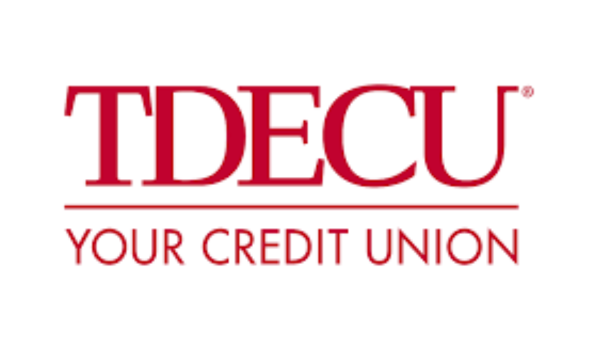

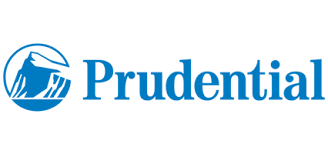

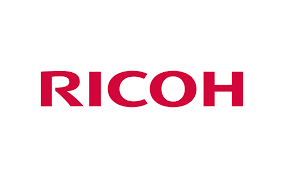

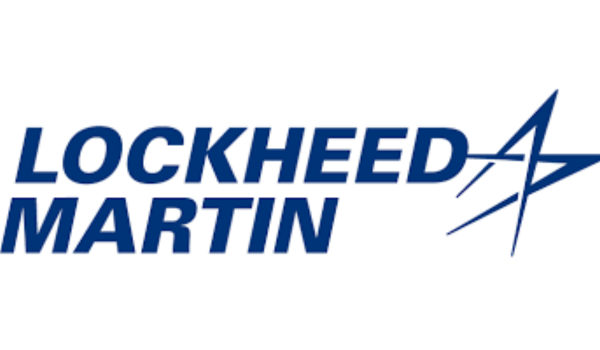

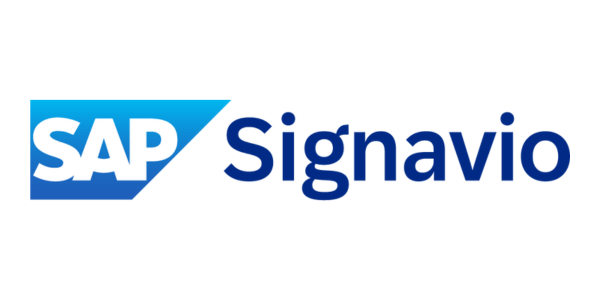

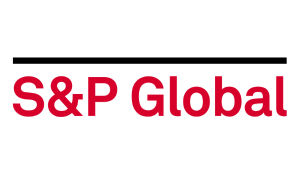

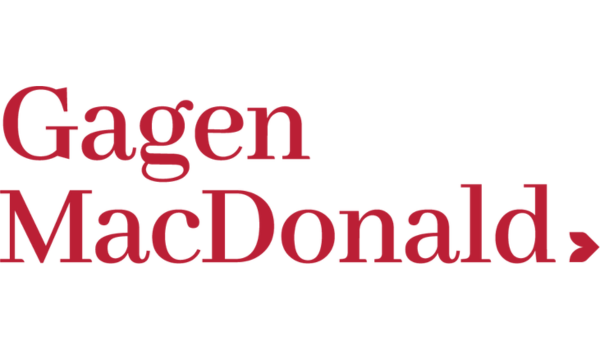

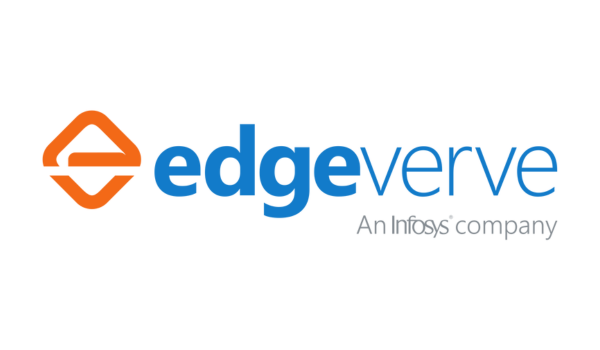



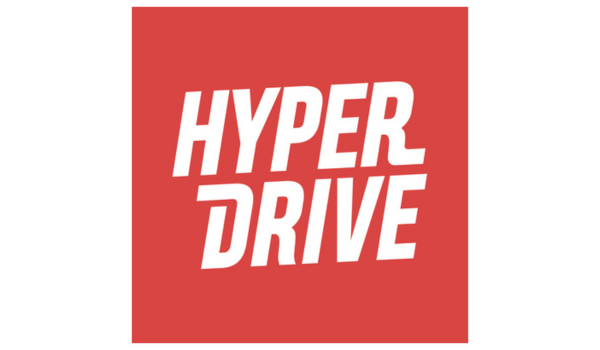

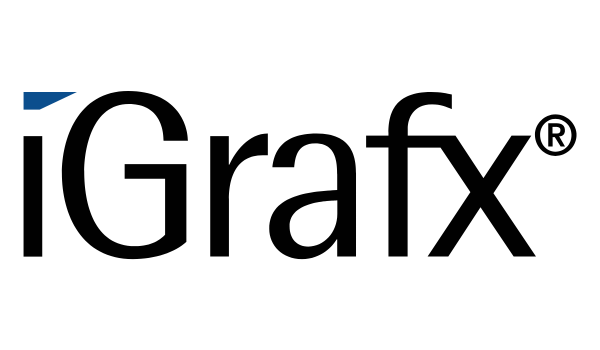







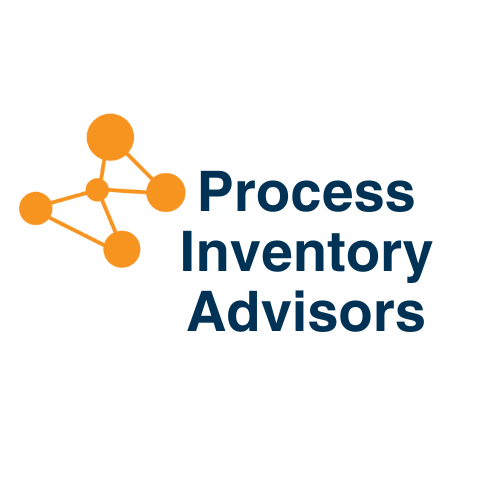

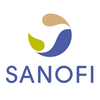

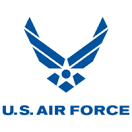


Learn about and how to leverage the Dragonfly Construct, a new process improvement methodology that challenges the status quo of how strategy is developed and implemented within a corporation and streamlines efficiencies to derive a new format for strategic management and process improvement.
Key Takeaways:
Frontline workers want to understand how technology and artificial intelligence can elevate their work. We will do a deep dive into empowering frontline teams and exploring strategies and the benefits of giving them the tools and autonomy they need to excel in their roles. Driving innovation to customer satisfaction, empowering frontline teams is critical to employee readiness through an organization's digital transformation journey. This session will cover a people-first mindset and how we should prepare the workforce for the changes ahead. As artificial intelligence continues to reshare industries, preparing the frontline workforce for this revolution is crucial.
Key Takeaways: